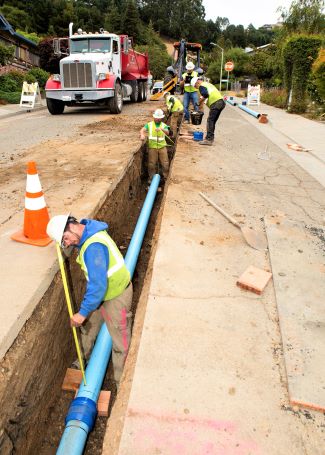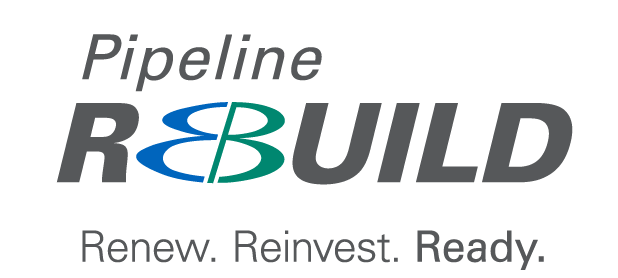EBMUD is proactively replacing its pipelines to improve water service, reduce water loss and the number of pipeline breaks in the service area. In the East Bay, 4,200 miles of pipelines, under bustling neighborhoods and busy streets, deliver high-quality water to 1.4 million customers.
Half of these pipelines were installed more than 50 years ago. The pipelines are constructed of cast iron, asbestos cement, steel, or plastic. There are many factors including soil conditions, proximity to active faults, system operating conditions, and construction materials that determine how long a pipeline will last. EBMUD regularly reviews its processes and materials to replace pipelines for efficiency, effectiveness, and resilience.
Much of EBMUD's distribution network of 4,200 miles of aging pipe is in need of renewal or replacement.
How does EBMUD decide to replace a pipeline?
EBMUD’s pipeline replacement program focuses on pipelines that are near the end of their useful life. The cost to replace a pipeline is much greater than the cost to repair, so we carefully select which pipelines to replace each year using a risk-based model to prioritize our investments in pipeline replacement. The model considers leak history, soil conditions, ground slope, elevation, local hazards (e.g., potential landslides), and proximity to creeks and water bodies.
How does EBMUD coordinate with other agencies?
Every year, EBMUD distributes its pipeline work plan with jurisdictions in our service area to outline construction activity. Using the plan, EBMUD and local jurisdictions can work together to avoid conflicts and identify opportunities to minimize community disruptions. EBMUD also regularly meets with city and county staff to coordinate major pipeline repairs and replacement projects and discuss street pavement moratoriums.
What is the process to replace pipelines?
Once a pipeline is identified as a potential candidate for replacement, EBMUD:
- Evaluates the proper pipeline sizing for current and future needs
- Coordinates with cities and counties on paving moratoriums
- Clusters pipeline replacements to minimize customer impacts
- Surveys the area near the proposed installation
- Collects information from other infrastructure owners (e.g., PG&E, telecommunications, sewer, storm drain, etc.) to avoid conflicts
- Applies for and negotiates encroachment permits
- Schedules construction activities
- Reaches out to customers with information regarding upcoming construction
What is the future of the pipeline replacement program?

By looking at the whole picture, we are able to strengthen our distribution system in a way that is good for the community, the bottom line and the planet.
Frequently asked questions
What construction impacts are expected when water pipelines are installed?